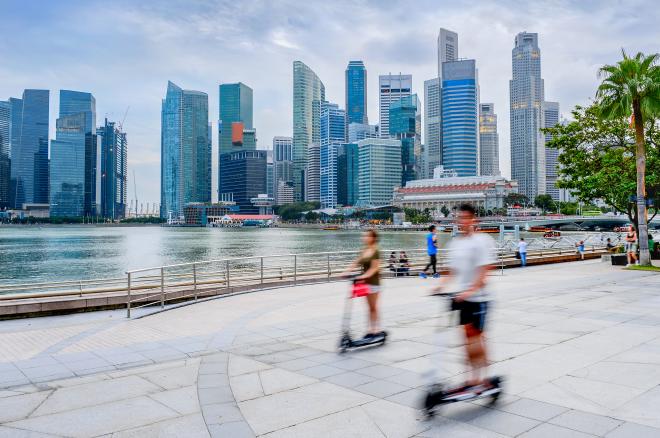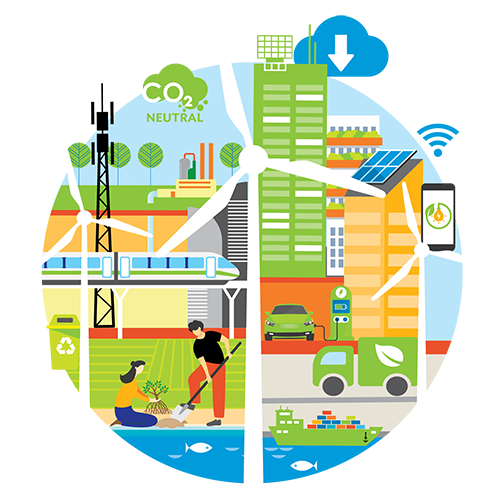
Singapore, with its self-driving cabs and buses and robot police, is the smartest city in Southeast Asia.
That is according to the IESE Cities in Motion Index 2020, which ranked the city-state as the ninth smartest in the world and the only entry from Southeast Asia in the top 10.
Based on how the index was put together, smart cities are economically sound, green, inclusive, well-run, has skilled and well-educated citizens, a good public transport system, are masterplanned for growth, have a solid international image, provide basic public services for all, and yes, technologically savvy in making sure their residents live well and sustainably.
Against this comprehensive definition of a smart city, London is the smartest in the world, followed by New York, Paris, Tokyo, Reykjavik, Copenhagen, Berlin, Amsterdam, Singapore, and Hong Kong, China.
In Asia Pacific, Tokyo topped the index, followed by Singapore, Hong Kong, China, Seoul, and Taipei,China.
There were a total of 174 cities included in the index.
The only other Southeast Asian cities that made it to the roster were Kuala Lumpur at 106, Bangkok at 112, Ho Chi Minh City at 127, Jakarta at 133, and Manila at 165.
Smart makeover
The index noted how Singapore excelled in using technology in order to serve its citizens better. “The city-state of Singapore is constantly showing its strength as the technological capital of Asia. It is a true smart city, where technological advances are the order of the day,” said the index.
Across the region, municipal leaders and their private sector partners have also been pushing to make over their cities to be smarter and livable.
The Asian Development Bank (ADB) is among those helping cities become smarter under the ASEAN Australia Smart Cities Trust Fund. The trust fund was set up in 2019, with co-financing from the Australian government, to help ASEAN countries build livable cities that are green, competitive, inclusive, and resilient.
During an Asian Development Bank Institute (ADBI) webinar in December, Allison Woodruff, ADB senior urban development specialist, said the program is focused on helping cities adopt digital solutions to improve key functional areas involving city planning systems, service delivery, and financial management to make sure cities have the money to follow through with their plan. ADB also makes sure projects observe gender equity, social inclusiveness, and climate change goals.
The trust fund so far covers the following cities: Battambang, Bavet, Kampot, Phnom Penh, and Poipet in Cambodia; Banjarmasin, Cirebon, Makassar, Palembang, and Sorong in Indonesia; Kaysone, Luang Prabang, and Pakse in the Lao People's Democratic Republic; Penang in Malaysia; Baguio, Coron, El Nido, and Manila in the Philippines; Gia Nghia, Ho Chi Minh City, Hue, Phan Rang, and Phan Thiet in Viet Nam; and Chonburi in Thailand.
Some of the cities are also part of the ASEAN Smart Cities Network, which is the regional cooperation’s platform to build smart and sustainable cities.
Success factors
According to Woodruff and other experts, there are certain factors needed to build a smart city. Here are some of them.
• Set long-term vision. Woodruff said city leaders must have a long-term vision that extends beyond the political cycle. “City authorities tend to think in short 4- or 5-year cycles, but building the capacity and the vision to become a smart city takes time,” she said.
• Have the right leadership. Victor Mulas, senior urban specialist at the World Bank, said to build smart cities, there should be political will at the highest level, especially the mayor. He said political will is needed to carry through the implementation as the shift brings institutional changes.
• Get the buy-in from the government workforce. Mulas said that success also depends on whether the government’s workforce supports the project. Citing smart city projects he had supported around the globe, he said the main issue they encountered related to whether the workforce was familiar with the technologies being used and had the capacity to use them. He said one of the things that contributed to Singapore’s success to become a smart city is how it deployed so-called “commandos,” who serve as technology leads that go from department to department to train government employees on how to use technology and how to change systems. "It's not about implementing the technology to do the same things, but to do it differently and more efficiently. So you need to change how you do things and the workforce needs to know how to do that first.”
• Nix idea of using technology for technology’s sake. Woodruff says becoming a smart city entails identifying the problems and the urban challenges that cities and its residents are facing. “It's about looking at how to solve those challenges and how technology can enable us to solve those better or more efficiently, so having that plan and that leadership in place to really look through the urban challenges and look for where technology can fit in and enhance is critical.”
• Get the basics right and the foundation in place. If cities do not have the basic systems in place, like for instance, a functioning solid waste management system, technology would not be of much use, said Woodruff. Deploying sensors in garbage receptacles to transmit data in real time when a bin needs to be emptied, may sound like a bright idea, but if a solid waste management service is not in place or the municipality does not have the collection vehicles to provide good services, it defeats the purpose.
• Form partnerships. “No city can go it alone whether that’s partnership between cities,” said Woodruff. This is where twinning comes in. She said prospective smart cities should work with other mature smart cities and learn from their experience and how they have done things in practice. Partnering with academia and the private sector is also needed, she said. Although governments play a key role in setting the vision in coordinating strategies, they do not necessarily have the capacity, the expertise or know-how, or even financing, which the private sector can bring in. On the knowledge side, partnering with research institutions can also be beneficial.
• Be citizen-focused. Pitchaya Sirivunnabood, capacity building and training economist at the ADB Institute, said getting the input from the community through “collective decision-making” is also necessary. If the citizens cannot accept changes or they do not trust the leadership and its plans, it can cause problems. Woodruff agreed, noting getting people to adopt and accept the technology is a critical success factor for many smart cities. Since smart cities are built on the premise of solving problems people encounter, the citizens need to be engaged early when identifying problems, she said. “They need to be involved in identifying solutions. There needs to be trust and buy-in.” For instance, she said traffic management systems would not be successful if people do not participate by inputting the choke points on the road. “The technology itself won't be successful. Remember that smart cities are not just about the technology. It’s more about the people.”

